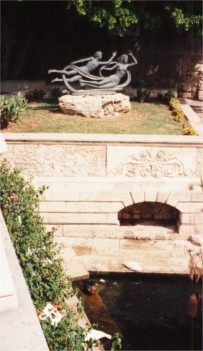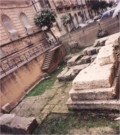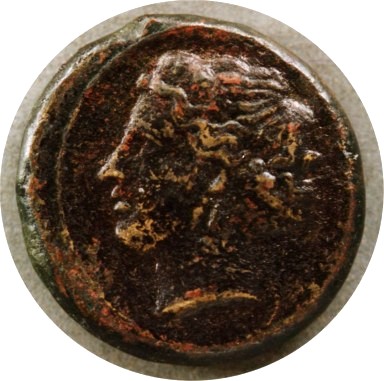Syracuse, Ancient Sicily and
Arethusa's Tetradrachm and Hemilitron



Siracusa was colonized by Corinthian Greeks in the 8th C. BCE. In Greek Mythology, the nymph Arethusa, pursued from Greece by the river god Archelos, took refuge on Syracuse's Island of Ortigia where, for her salvation, she was changed into a fresh-water spring by Artemis. The modern statuary above (shown top, left) of Archelos chasing Arethusa is placed near a Syracuse fountain supplied by an unusual fresh-water spring. The many archeological sites of Syracuse (only 2 of which can be presented here) include the Latomias (shown next) -- the stone quarries that held, in the 5th C. BCE, the 7000 prisoners who were the survivors of the ill-fated Athenian expedition against Syracuse. The Fortification Wall (shown last) was built by Dionysius I, 405-367 BCE -- the very tyrant who expelled Plato from Syracuse.

Silver Tetradrachm, 485-479 BCE.
Reverse: Head of Arethusa right, surrounded by dolphins. [Boehringer 130]


Bronze Hemilitron, 415-405 BCE. Obverse: Head of Arethusa, left. Signed by Euainetos (Close-up: EY on ampyx) [Calciati II, p.45] [Favorito, The Signed Bronzes of Syracuse, The Best of the Celator 1996, pp.68-73]
Q: Under what tyranny was the tetradrachm above minted?
A: It was minted under Gelon -- and possibly engraved by the Demaretian Master!